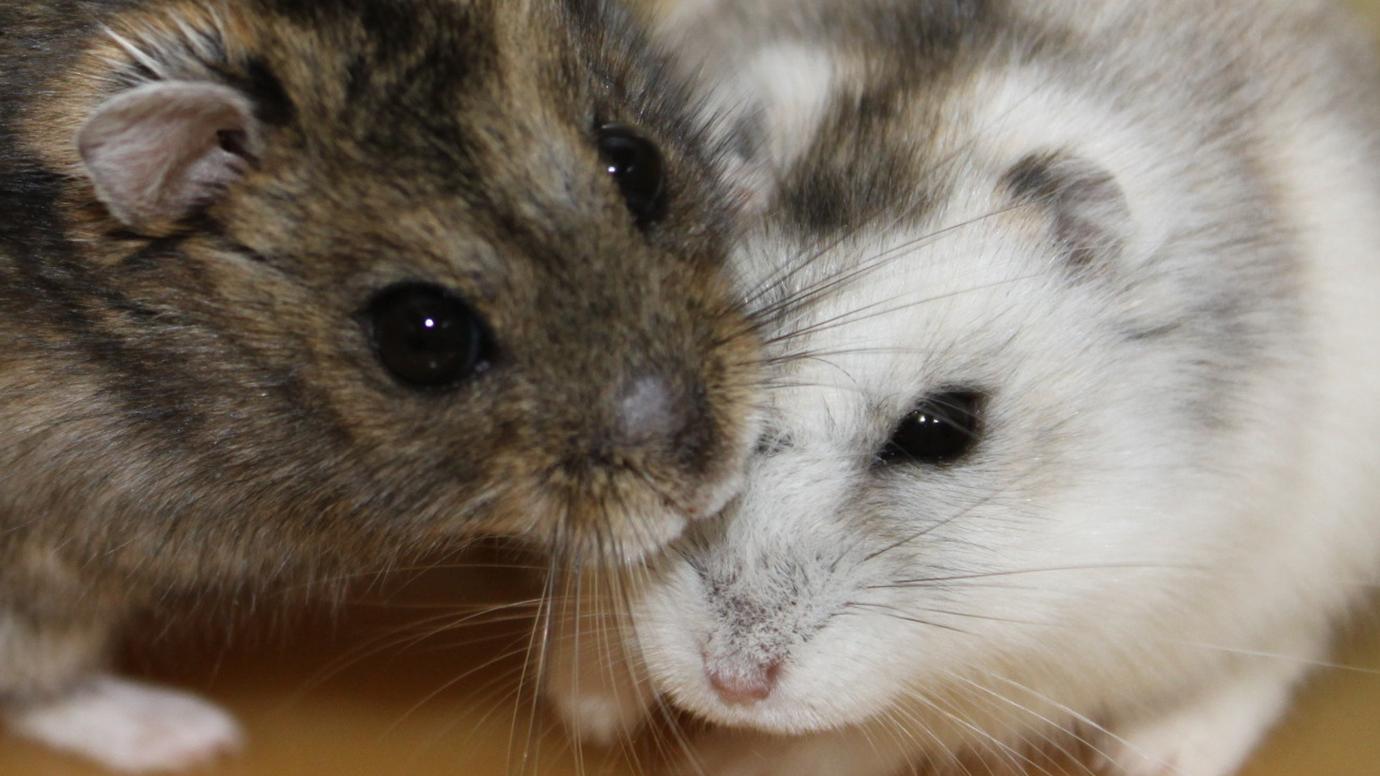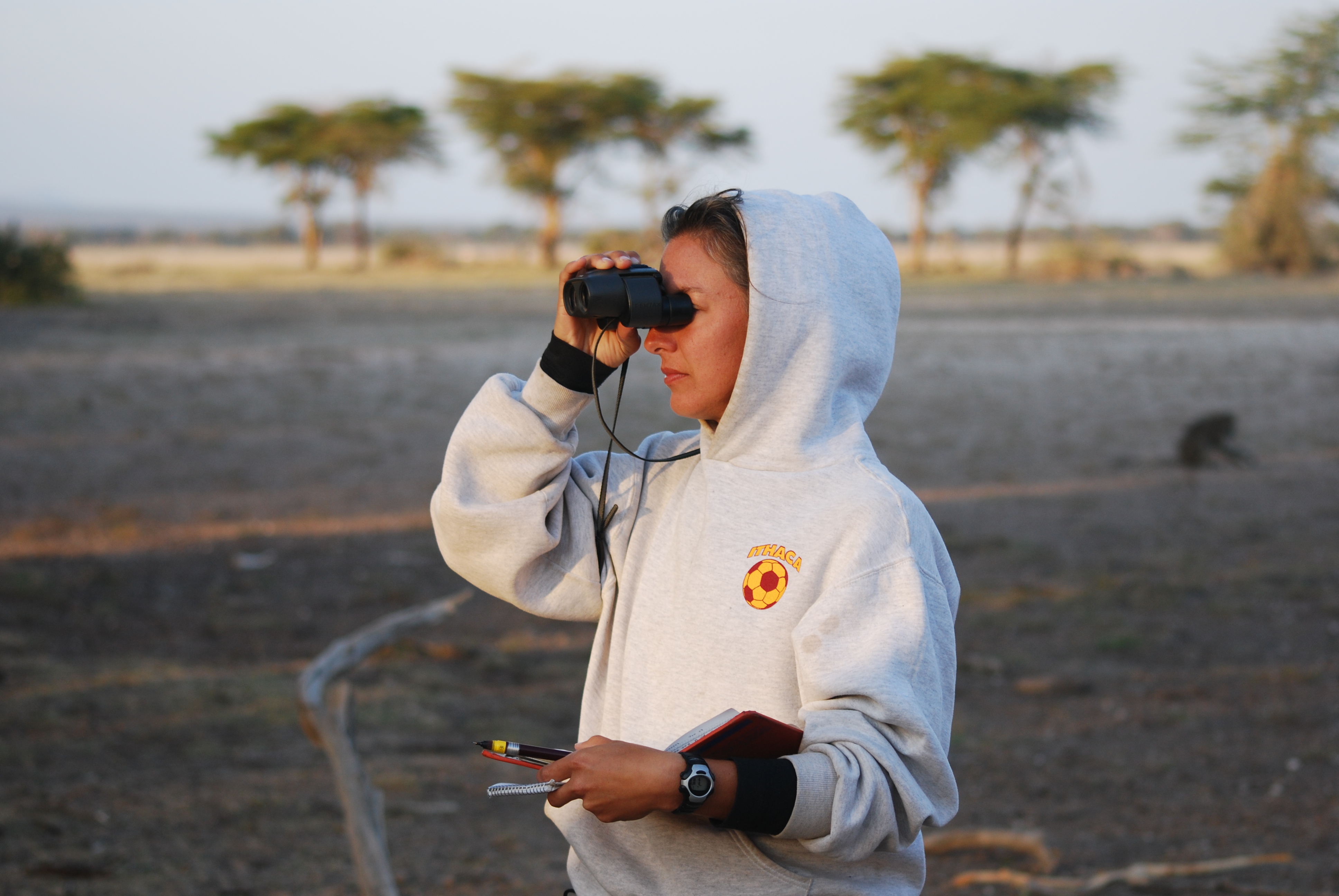Predoctoral Trainees

Liz Aguilar
Liz’s research investigates mechanistic and functional causes of individual differences in social behavior in free-living female tree swallows (Tachycineta bicolor), for an integrative view on how variation is maintained. Using neurogenomic and behavioral approaches, her dissertation will examine how both evolutionary and proximate mechanisms work together to build an aggressive female, an often-overlooked perspective. Further, social aggression requires endurance, as females engage in extended aerial chases and intense physical attacks during competition for nestboxes, so Liz is also interested in metabolism and energetics.


Justin Bollinger
Justin’s research focused on sex differences in, and stress effects on, microglia and microglia-neuron interactions in the medial prefrontal cortex (mPFC) of rats. Microglia are the resident immune cells of the brain, and are capable of regulating neuronal transmission and architecture. Male and female rats show opposite patterns of stress-induced microglial activation in mPFC: chronic stress increases microglial morphological activation in males, but decreases microglial activation in females. His dissertation addressed the mechanistic role of gonadal hormones in this difference, as well as the role of microglia in maintaining and remodeling dendritic architecture in mPFC, synapse-associated gene expression, and behavior. Justin is currently pursuing postdoctoral training at the University of Cincinnati.
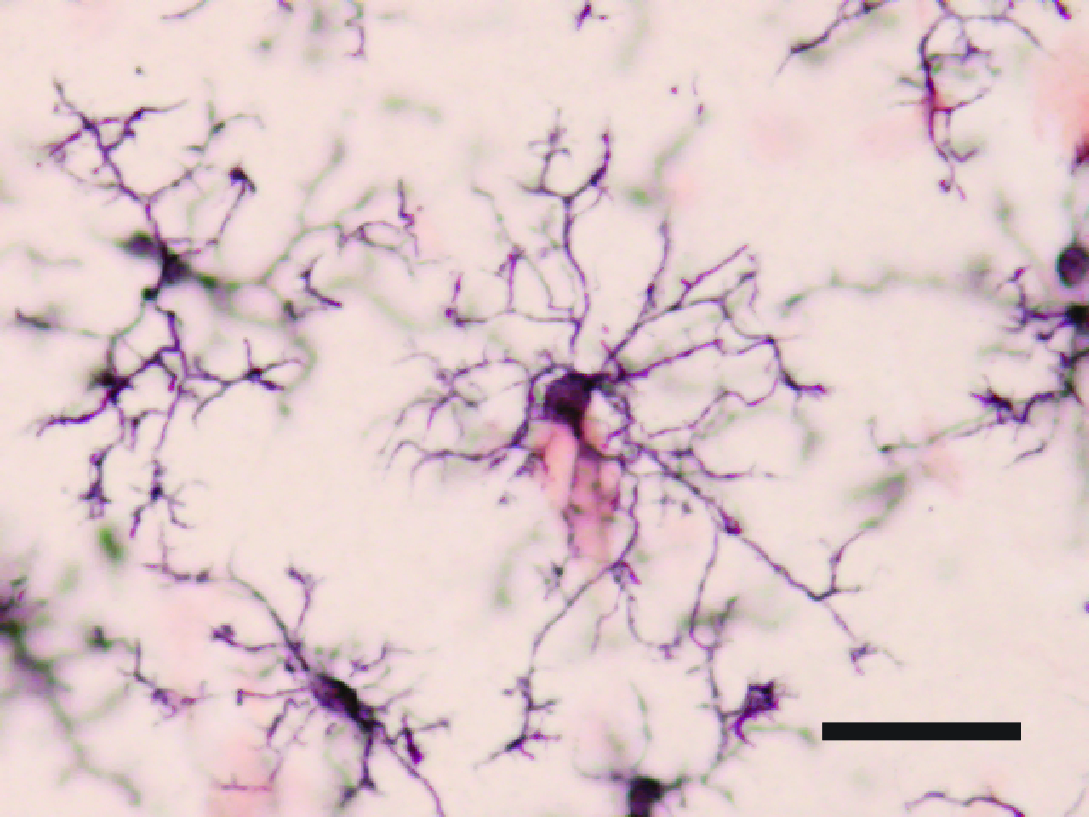

Lauren Brunner
Lauren’s research revolves around how internal state and external context affect neural processing of courtship vocalizations in house mice (Mus musculus). She is especially interested in how exposure to social stressors may influence auditory processing and vocal behavior in both male and female mice. By using behavioral and physiological techniques, she is able to examine how differences in social experience and environmental conditions affect how mice respond to important social signals: courtship rejection vocalizations (broadband vocalizations).
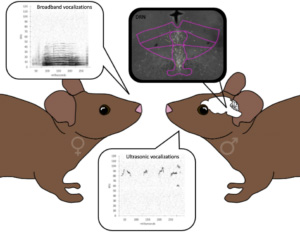

Samantha Cohen
Sam studied the decision-making processes of mate choice in humans. Her dissertation research examined whether the search strategies used in romantic partner choice generalize to other non-romantic social domains. She was particularly interested in modelling both relationship entrance and exit behaviors, using traditional psychological lab experiments and agent-based models. Sam also studies sexual strategizing, such as changes in courtship behavior in online environments, such as Tinder, and at reproductive milestones, such as menopause. Sam is currently a Postdoctoral Researcher at the University of Virginia.


Megan Freiler
Megan’s dissertation focusesd on the neuroendocrine mechanisms that regulate species and sex differences in social communication in apteronotid weakly electric fish. Electric fish produce an electric organ discharge (EOD) and modulate the frequency of this discharge during agonistic and courtship interactions. The structure and use of EOD modulations are often sex- and species-specific. Megan studied how the function of these signals varies across social context in species that vary in their degree of sociality and sexual dimorphism. She was also interested in how steroid hormone production and neuromodulator receptor gene expression in sensory brain regions changes in response to social experience across species and sex. She is currently pursuing postdoctoral training at the University of Minnesota.


Elizabeth George
Elizabeth’s dissertation focused on the physiological and behavioral responses to competition in female tree swallows (Tachycineta bicolor), which are songbirds that fight intensely for access to nesting sites (i.e., bird boxes). She measured both seasonal and short-term patterns of circulating hormone levels (with an emphasis on testosterone) and steroid-related neural gene expression to investigate how territorial females respond to intruders, which she simulates using taxidermic mounts placed at the entrances of nest boxes or incites among neighboring birds by temporarily reducing bird box availability. She was also interested in trade-offs between aggression, parental care, and survival, and investigated whether variation in aggression across breeding stages varied with age and reproductive success. She is currently a Postdoctoral Fellow in the Department of Biobehavioral Health at Pennsylvania State University.


Kayleigh Hood
Kayleigh’s research focused on the neural mechanisms underlying sexual communication in house mice (Mus musculus). Her dissertation examined the relationship between serotonin fluctuations within the auditory midbrain (inferior colliculus; IC) and male sexual response to female auditory cues. Using behavioral and neurophysiological techniques, her research investigated how serotonin in the IC of male mice encodes female communication during sexual interactions. Kayleigh is currently a Biologist at the National Science Foundation.
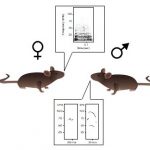

Sierra McAlister
Sierra’s research explored how manipulating salient characteristics within female signals and contextual cues affect the neural processing surrounding male house mice (Mus musculus) courtship vocalizations. She was especially interested in understanding how multiple sensory systems (specifically the olfactory and auditory systems) work together to influence auditory processing and behavioral responses during opposite sex interactions. In addition to using behavioral studies, she also used physiological techniques to understand how manipulating auditory signals and context is represented in the brain. To do so, she examined the relationship between three interconnected brain regions by measuring c-Fos and serotonin fluctuations. Sierra completed her Ph.D. in 2024, and is currently a Research Associate at Indiana University.
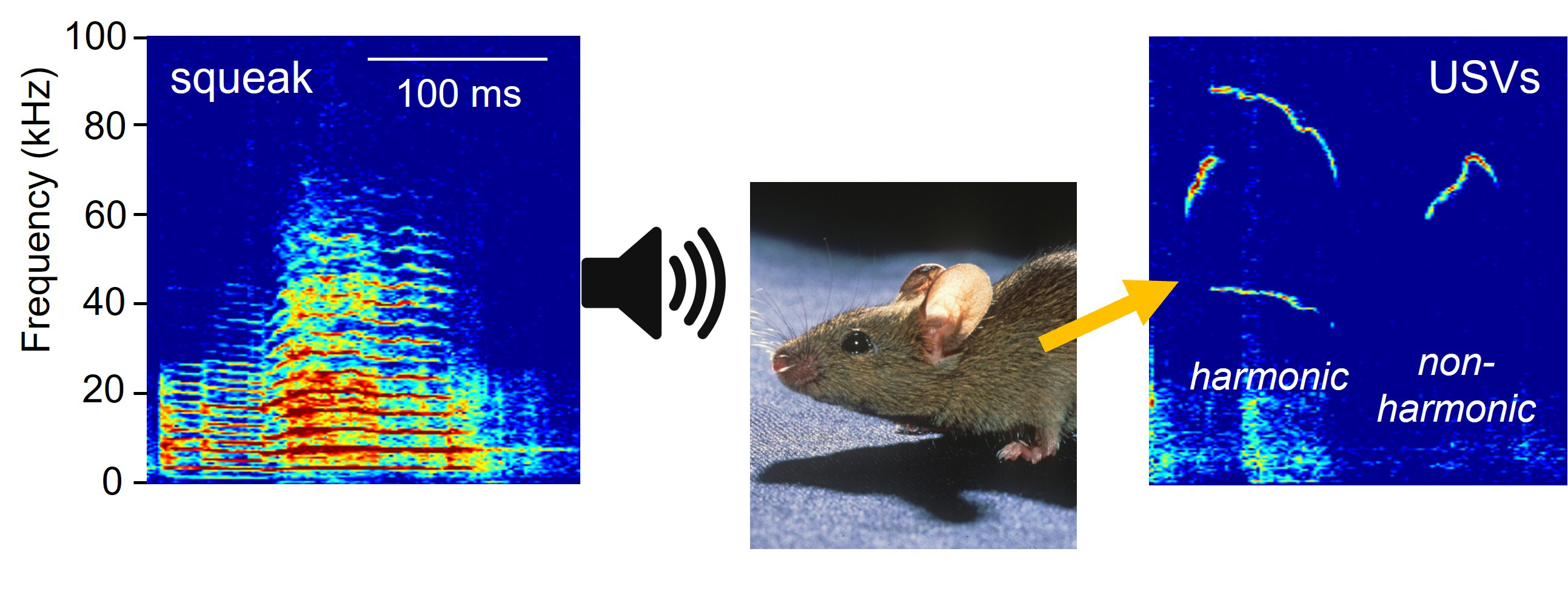

Kara Million
Kara’s research focused on parasites, mate choice, and immunogenetic diversity in darters, colorful freshwater fish. In her dissertation research she used field, experimental, and molecular techniques to evaluate several competing hypotheses proposed to explain the maintenance of high genetic diversity in MHCs, a component of the vertebrate immune system. Kara monitored patterns of parasite infection in wild darters and used next-gen sequencing techniques to search for signatures of heterozygote advantage or negative frequency-dependent selection at MHC loci. She also used behavioral trials in the lab to determine whether mate choice mediates MHC diversity in darters. Kara is currently an Assistant Professor at the University of North Alabama.
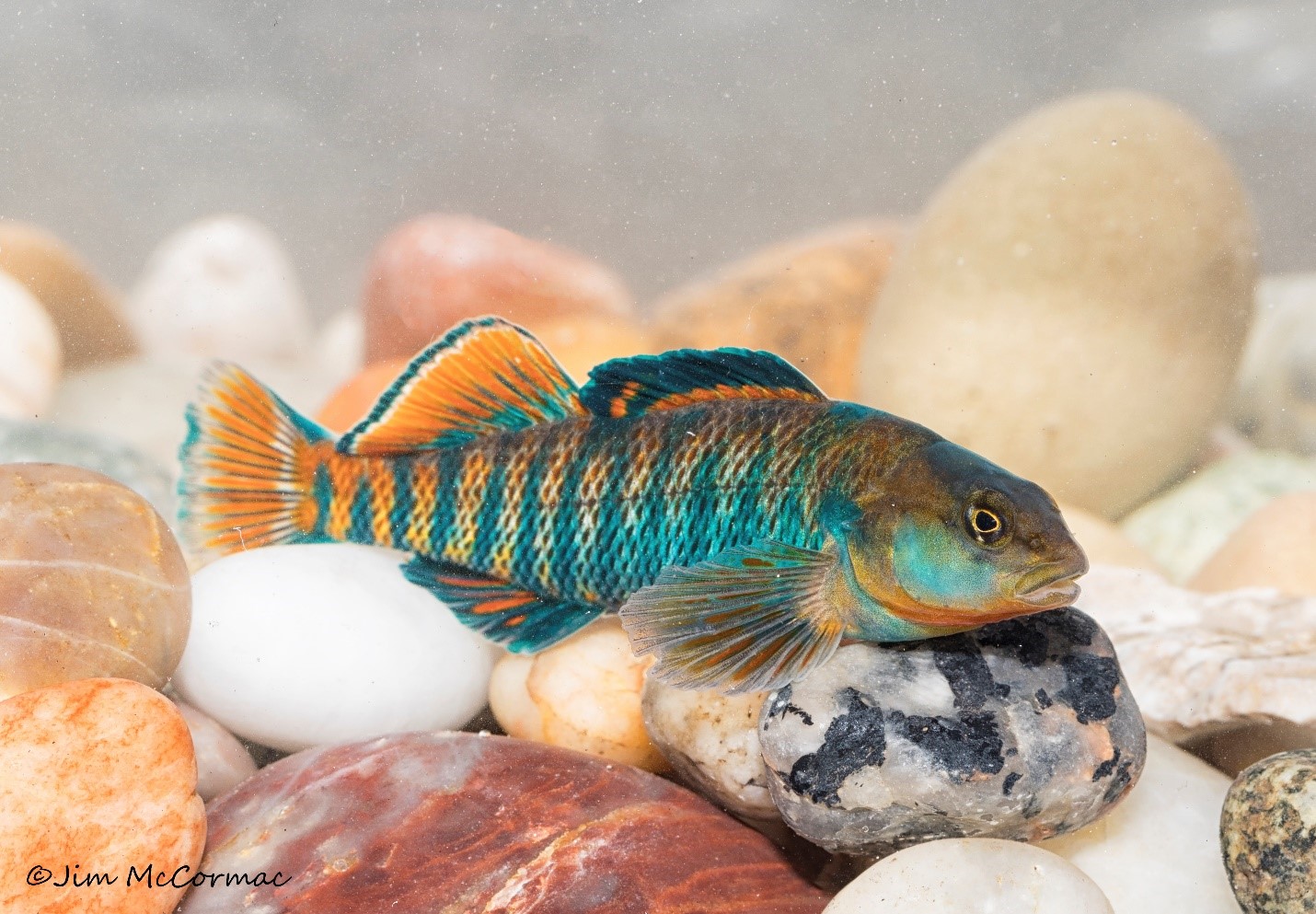

Kelly Moench
Kelly’s research focuses on sex differences in the lasting effects of chronic stress on the brain and behavior. Specifically, she is interested in how chronic stress alters responsivity to novel stressors following a rest period (two-hit stress) differentially in male and female rats. Most rodent models of chronic stress focus on the immediate effects of stress, leaving a gap in our understanding of the longer-term sequelae of changes that may persist in the days after stress ends. Using electrophysiology and behavioral assays, her dissertation elucidated changes in neuronal activity within medial prefrontal cortex, as well as changes in behaviors mediated by this region, following an initial chronic stressor and rest period, as well as after two-hit stress in males and females. Kelly pursued postdoctoral training at Indiana University-Purdue University Indianapolis, and is now a Study Design Manager | Global Project Management at Precison for Medicine.
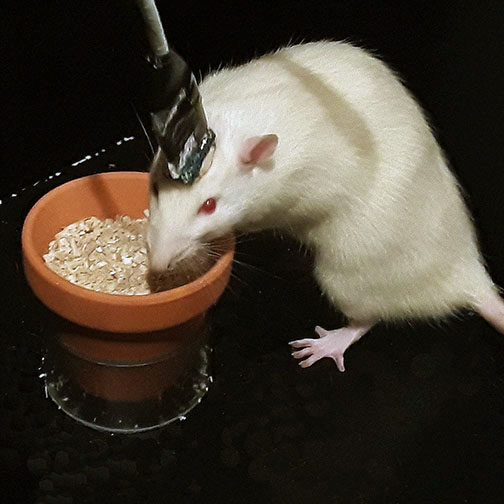

Beth Morrison
Beth’s research focuses on maternal-offspring gut microbiome and behavior. Hamsters, like humans and other mammals, are initially colonized by bacteria from their mother. These microorganisms play a large role on early life development and may have lasting consequences into adulthood. Beth is studying how the transfer of bacteria from mothers to offspring may be disrupted in the presence of maternal antibiotics and cesarean section birth, and the effects on hormones, neurodevelopment, and behavior.
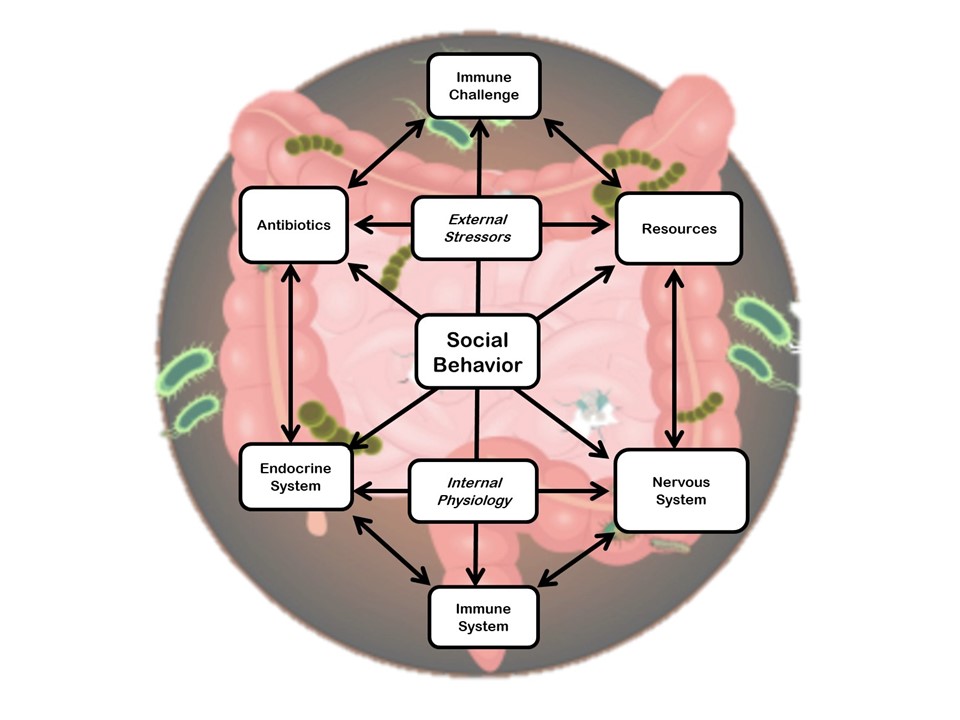

Kat Munley
Kat’s research integrated molecular, physiological, and behavioral techniques to investigate the neuroendocrine mechanisms underlying territorial aggression in Siberian hamsters (Phodopus sungorus). More specifically, Kat’s dissertation examined how seasonal fluctuations in melatonin secretion alter central and peripheral steroid hormone synthesis and aggressive behavior across reproductive states and whether these mechanisms differ between the sexes. Kat is currently an Assistant Professor at the University of Alberta.
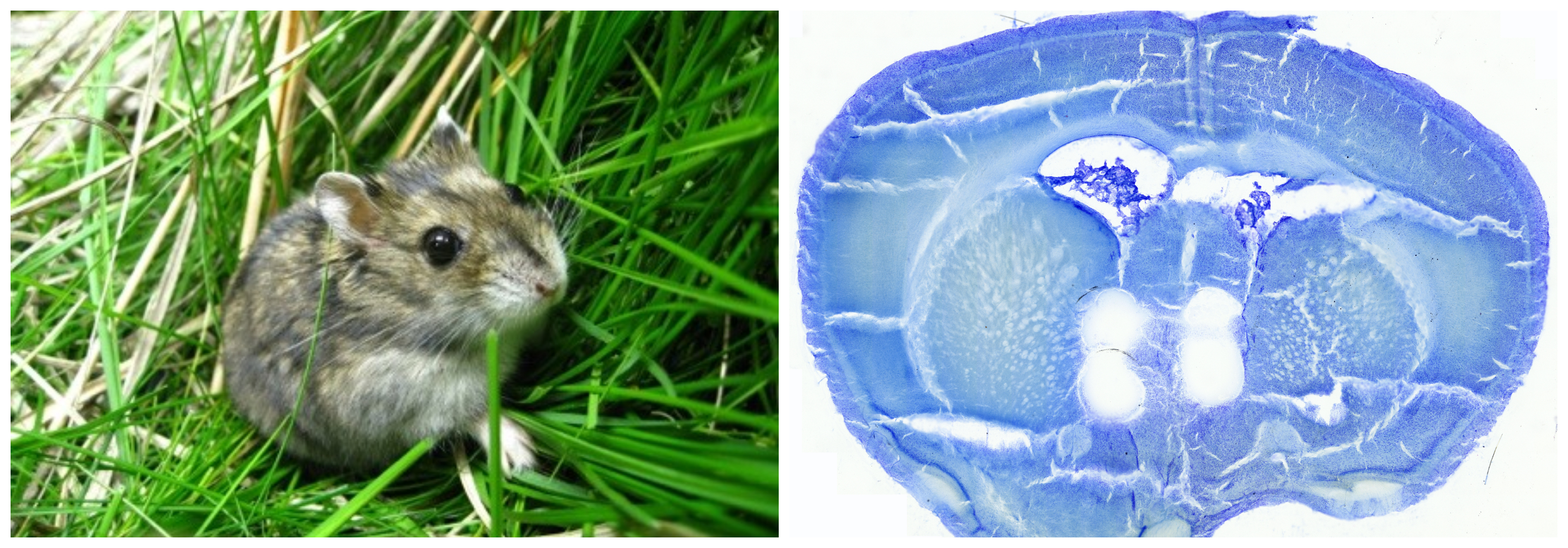

Erica Nadolski
Erica is interested in the origins, expression, and evolution of differences among the sexes, focusing on horned beetles in the genus Onthophagus. Her work aims to deepen our understanding of the developmental genetic mechanisms that allow different traits in the same individual to exhibit varying degrees of sexual dimorphism, and her work also investigates how these mechanisms evolve, facilitating the diversification of sexual dimorphism across lineages. Erica is also interested in how diverse trait types are co-regulated to facilitate the expression of secondary sexual trait complexes between morphology, physiology, and behavior. Her project will assess the degree to which morphological and behavioral dimensions of secondary sexual differences in these beetles are developmentally and genetically de-coupled, providing the potential to evolve in a modular, independent manner.


Eric Navarro
Eric’s research investigated how differences in the valence of vocal signals may affect behavioral responses during sexual communication in house mice (Mus musculus). Females produce ultrasonic vocalizations (USV) and broadband vocalizations (BBV) during sexual interaction that may signal the females’ intent. BBVs have been associated with female rejection behaviors and USVs with positive courtship behaviors, potentially allowing the males to respond appropriately. Eric completed a Masters degree in 2024.


Brooke Peckenpaugh
Brooke’s research focused on female reproductive adaptations in Drosophila. Particularly, cryptic female choice, or the physical and chemical factors determining patterns of female sperm use after mating, is known to play a central role in post-mating reproductive interactions in many organisms. Using a combination of manipulative experiments and broad-scale comparative analyses, Brooke identified both physiological and genetic mechanisms of cryptic female choice, as well as its adaptive basis. Furthermore, she studied cryptic female choice in the context of many well-documented male reproductive adaptations in Drosophila, enabling her to test hypotheses about reproductive coevolution between the sexes. She completed her Ph.D. in 2023 and is currently a Scientific Editor at JAM Post.


Christopher Petersen
Chris’s research focused on how patterns of neural activity fit within an anatomical framework in order to process socially relevant sensory information. By combining a neuroethological approach with tract tracing and multi-fluorescence immunohistochemistry, his dissertation aimed to elucidate the neuroanatomical substrates that facilitate serotonin release in the auditory midbrain (inferior colliculus; IC) of male and female laboratory mice. As mice use vocal cues to convey different information regarding that status of ongoing social/sexual encounters, vocalizations may have different meanings depending on the sex of the receiver. Therefore, the mechanisms that gate serotonin release within the IC, a structure that processes social vocalizations, represent one route through which sex differences in the behavior may arise. He is currently pursuing postdoctoral training with Dr. Julia Lemos in the Department of Neuroscience at the University of Minnesota.
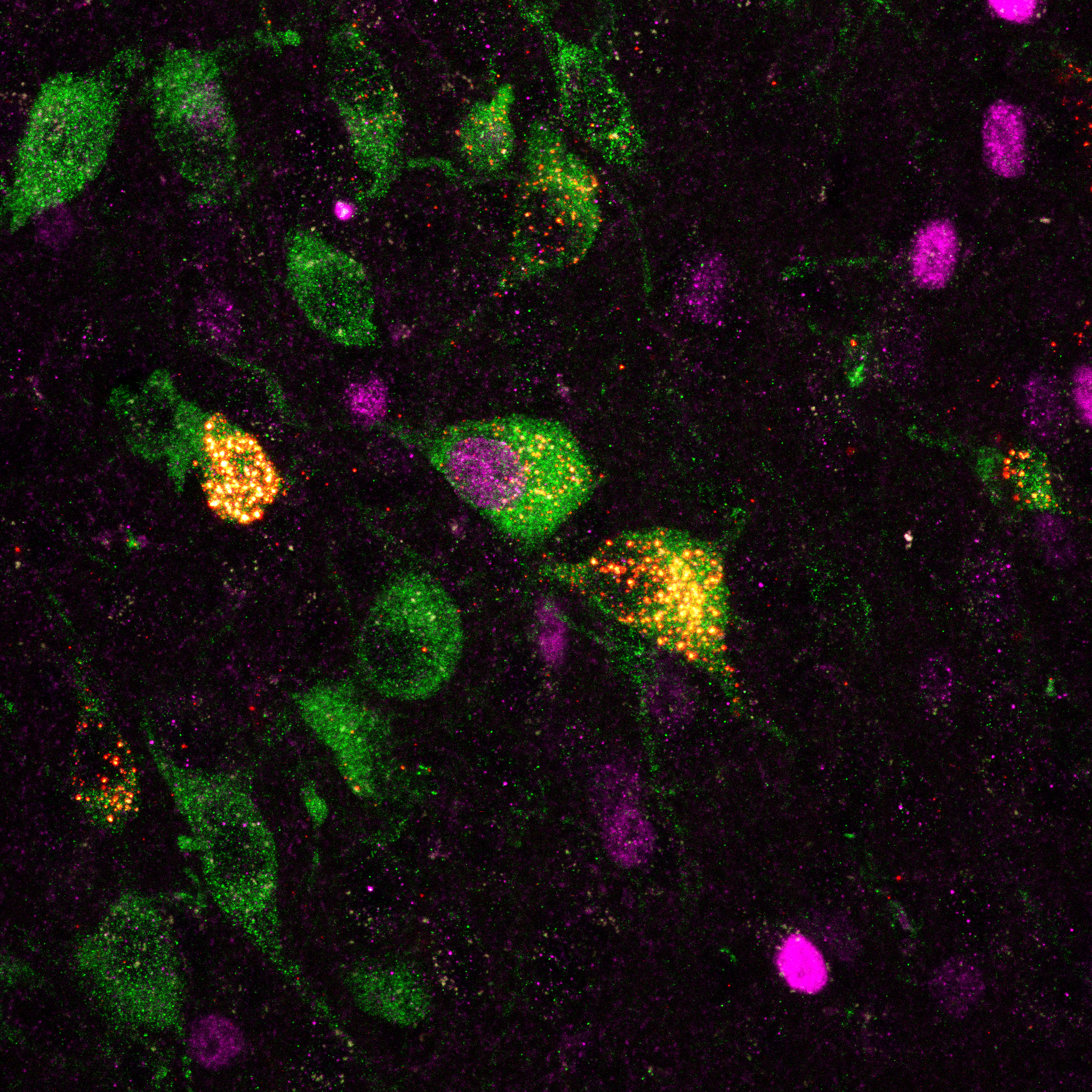

Malia Piazza
Malia’s research focuses on the bidirectional relationship between neuroendocrine activity and the mating and attachment behaviors of humans. With a biocultural perspective, she explores neuroendocrine patterns in couples, spanning a range of culturally influenced behaviors from arranged marriage to “self-choice” romantic relationships. Considering evidence that arranged marriage was prevalent during human evolution, she analyzes marriage and courtship behaviors through the lens of evolutionary mismatch theory. She is interested in comparing how these different behavioral patterns may affect life-history trade-offs associated with the hypothalamic-pituitary-gonadal (HPG) axis. Malia is also working on a number of projects focused on how health care systems influence sexual and romantic relationships, both through practitioners’ level of attention to these aspects of their patients’ lives and through the prescription of pharmaceuticals, such as SSRIs, that alter patients’ neuroendocrinology and can impact sexual and romantic outcomes.


Misty Proffitt
Misty is interested in the evolution of physiological mechanisms which underlie sexually dimorphic behavior. In Misty’s dissertation, she examined how species variation in steroid hormone related gene expression in the brain contributes to sexually dimorphic behavior. Ghost knifefish provide a unique opportunity to examine these types of questions because 1) the electric organ discharge frequency (behavior) is controlled by a simple neural circuit, 2) this neural circuit is mediated by hormones, 3) there is species variation in the degree of sexual dimorphism in the signal. Misty used a comparative framework by examining gene expression of three closely related knifefish species, which vary with respect to degree of sexual dimorphism, to examine how hormone related genes contribute to differences in sexual dimorphic behavior. Misty is currently a Research Scientist at Crown Laboratories.


Ellie Shell
In response to changes in the environment, organisms can alter their traits, whether those traits are physiological responses, morphology, or behavioral (even how they choose a mate!).This ability to response to environmental variation is called plasticity. Ellie’s work focuses on determining how plasticity in adult mate choice can affect offspring plasticity and fitness using the Eastern Spadefoot toad (Scaphiopus holbrookii). She is specifically interested in how the role of the environment effects evolutionary processes, aimed at exploring whether changing climates enable or hinder adaptations of individuals. With a complex life history (anuran parents inhabit land and tadpoles inhabit bodies of water), frogs are an ideal system to study the maintenance of fitness across distinct environments. Using behavioral and physiological approaches, her dissertation will assess how shifts in temperature will affect the evolution of fitness related traits across generations.
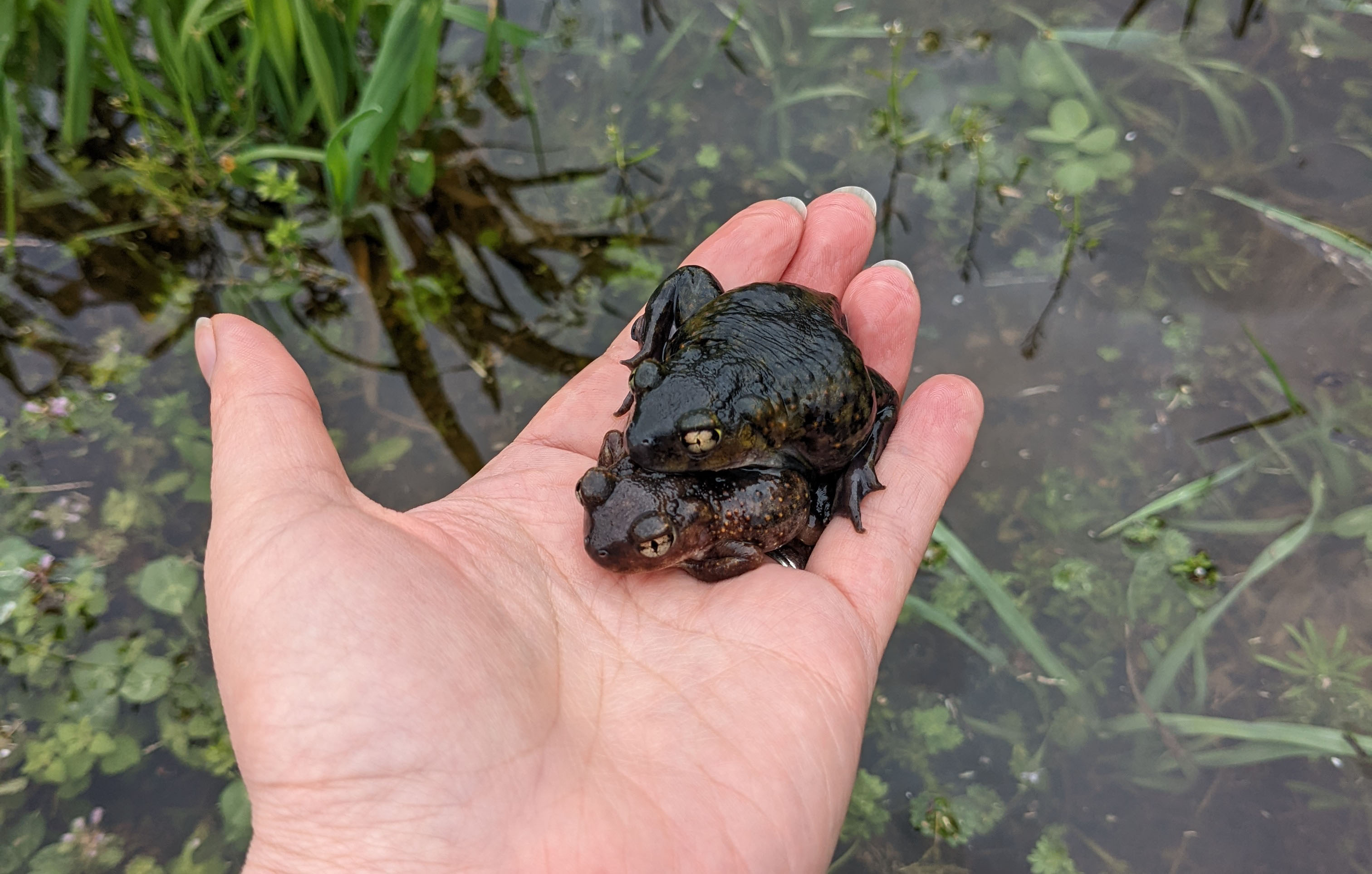

Jessica Short
Jessica’s research focuses on reproductive behaviors, intimate relationships, and sexuality. Her research uses the Relationship Dynamics and Social Life project to conduct a mixed-method analysis of how attitudes, intimate relationships, and sexual behaviors differ between sexual minority women and heterosexual women during the transition to adulthood. Specifically, she will examine three questions: 1. How do attitudes related to non-marital sex, pregnancy, and young parenthood differ between sexual minority women and heterosexual women? 2. How do patterns of intimate relationship formation and dissolution differ between sexual minority women and heterosexual women? 3: How do the experiences, sequences, and patterns of sexual behavior differ between sexual minority women and heterosexual women?


Nikki Stark
Nikki is interested in the endosymbiont bacterium, Wolbachia. Wolbachia is an interesting microbe as it induces reproductive manipulations in its host, alters the host microbiome, and inhibits the replication of RNA viruses in an insect host. Nikki’s dissertation research focuses on the mechanism by which Wolbachia blocks RNA pathogens. Nikki studies the mechanism using a tripartite system consisting of Drosophila melanogaster, Wolbachia strain wMel, and Sindbis virus. Overall, the goal is to determine how an endosymbiont affects immune function in insects, but it will inform us about antiviral mechanisms in general and how they may differ depending on sex. Nikki is in the process of characterizing a Wolbachia-modulated host gene that inhibits Sindbis virus replication. The expression of this host gene differs between females and males; thus, Nikki is also interested in how the mechanism in which this gene affects virus replication may differ between males and females.
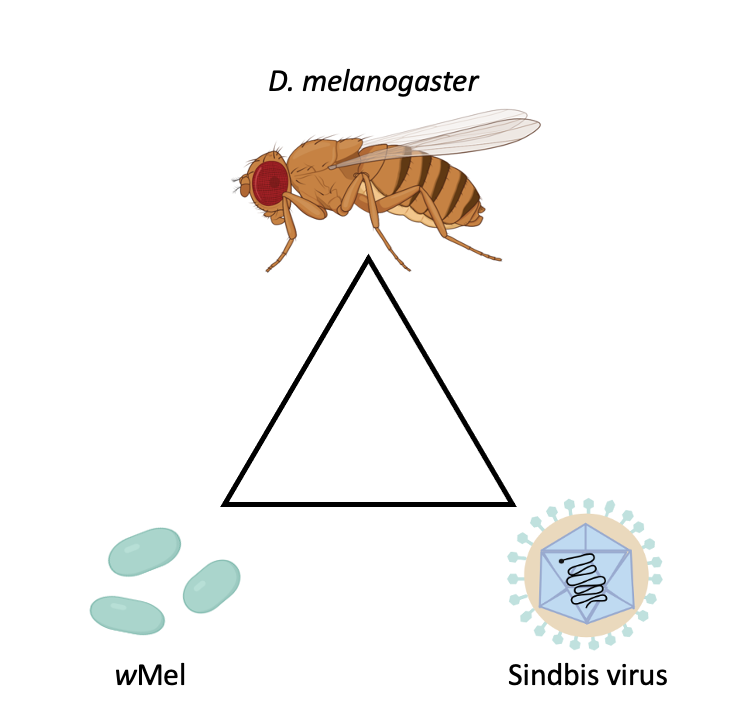

Tessa Steiniche
Tessa’s research investigated the effects of exposure to anthropogenic pollutants on hormones in nonhuman primates. Specifically, her work examined the role of exaptations, or pre-adaptions, to environmental chemicals which may now function in interactions with evolutionarily novel anthropogenic toxicants. Broadly, this work considers the effects of endocrine-disrupting chemicals on reproductive physiology and behavior, and explores the utility in applications of evolutionary theory for toxicological risk assessment.Tessa completed her Ph.D. in 2023, and is currently a postdoctoral researcher at the Woods Hole Oceanographic Institute.


Kristyn Sylvia
Kristyn’s research focused on the interactions among the neuroendocrine system, the reproductive system, and the immune system early in life, and how those relationships affect physiology and behavior in adult Siberian hamsters. More specifically, Kristyn was interested in studying sex differences in physiology and behavior and determining the mechanisms mediating those sex-specific effects. After pursuing postdoctoral training at Johns Hopkins University, she is now Senior Scientific Project Director at Summit Global Health.
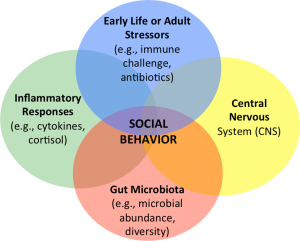

Katie Talbott
A host population can show wide variation in individual-level physiological responses to common parasites. However, the association between this variation and reproductive function remains little explored. To this end, Katie’s research focused on the impact of parasitism on host reproductive behavior and physiology, using the dark eyed junco (Junco hyemalis) and the causative agent of avian malaria (Plasmodium) as a model host-parasite system.
Katie’s work aimed to understand whether certain aspects of physiological infection response to parasitism are associated with trade-offs in reproductive capacity in male juncos. She also investigated the association between infection intensity and various measures of reproductive success in both male and female juncos; for this work, she leveraged a long-term data set and archived samples from wild, non-migratory juncos sampled near Mountain Lake Biological Station (Pembroke, VA). She received her Ph.D. in 2024, and is currently a postdoctoral researcher at the University of Memphis.
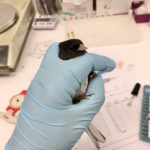

Sarah Wolf
Sarah’s research investigated the bidirectional links between telomeres (i.e., conserved DNA sequences at the ends of chromosomes) and various traits in wild tree swallows (Tachycineta bicolor). Using molecular, physiological, and behavior techniques, Sarah examined the causes and consequences of sex and tissue-specific vulnerability to early life stressors, and was interested in how variation in telomere dynamics may mediate later trade-offs between self-maintenance, aggression, and parental care. Sarah is now a postdoctoral research associate in the School of Biological Sciences at the University of Edinburgh.






